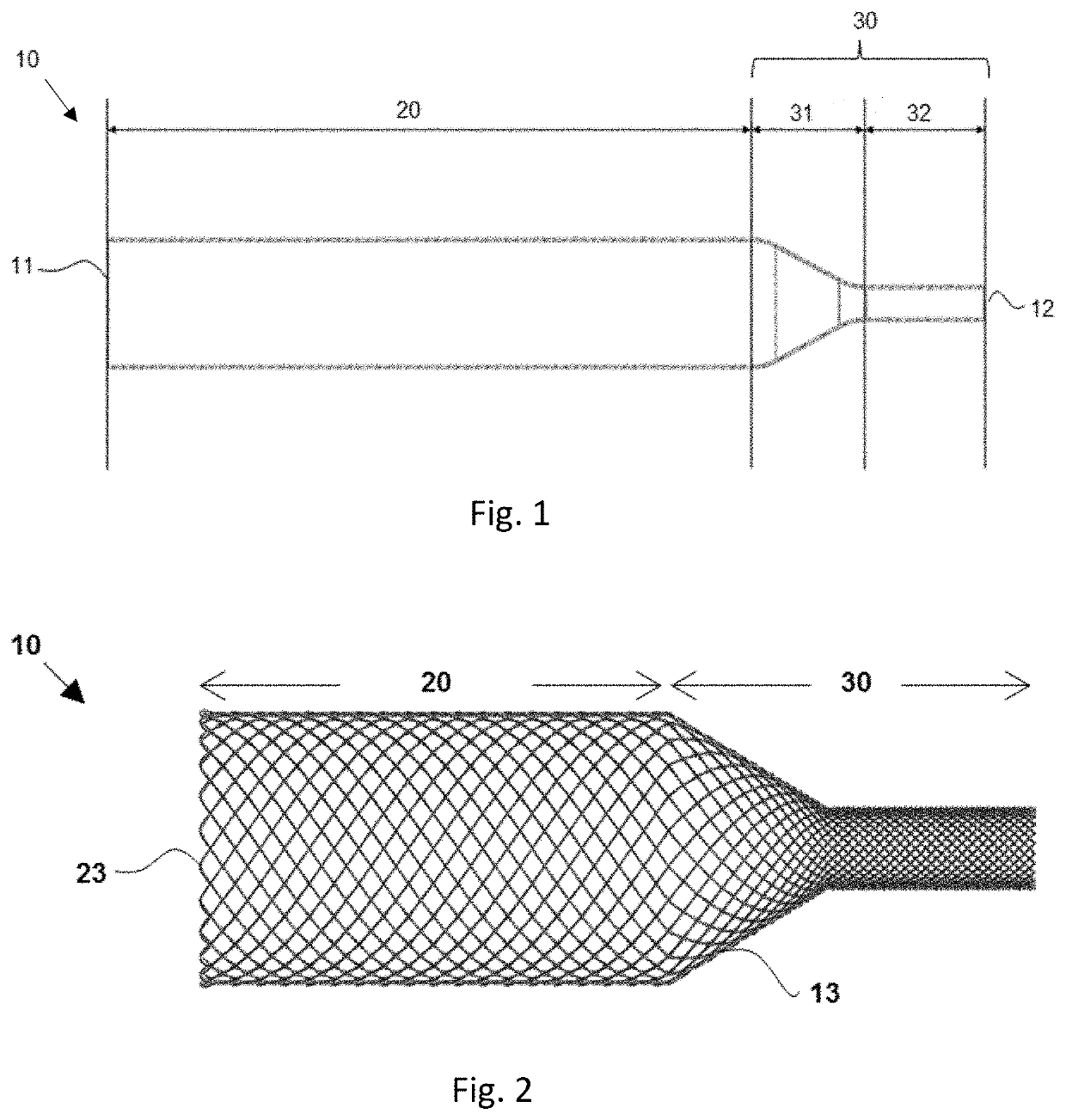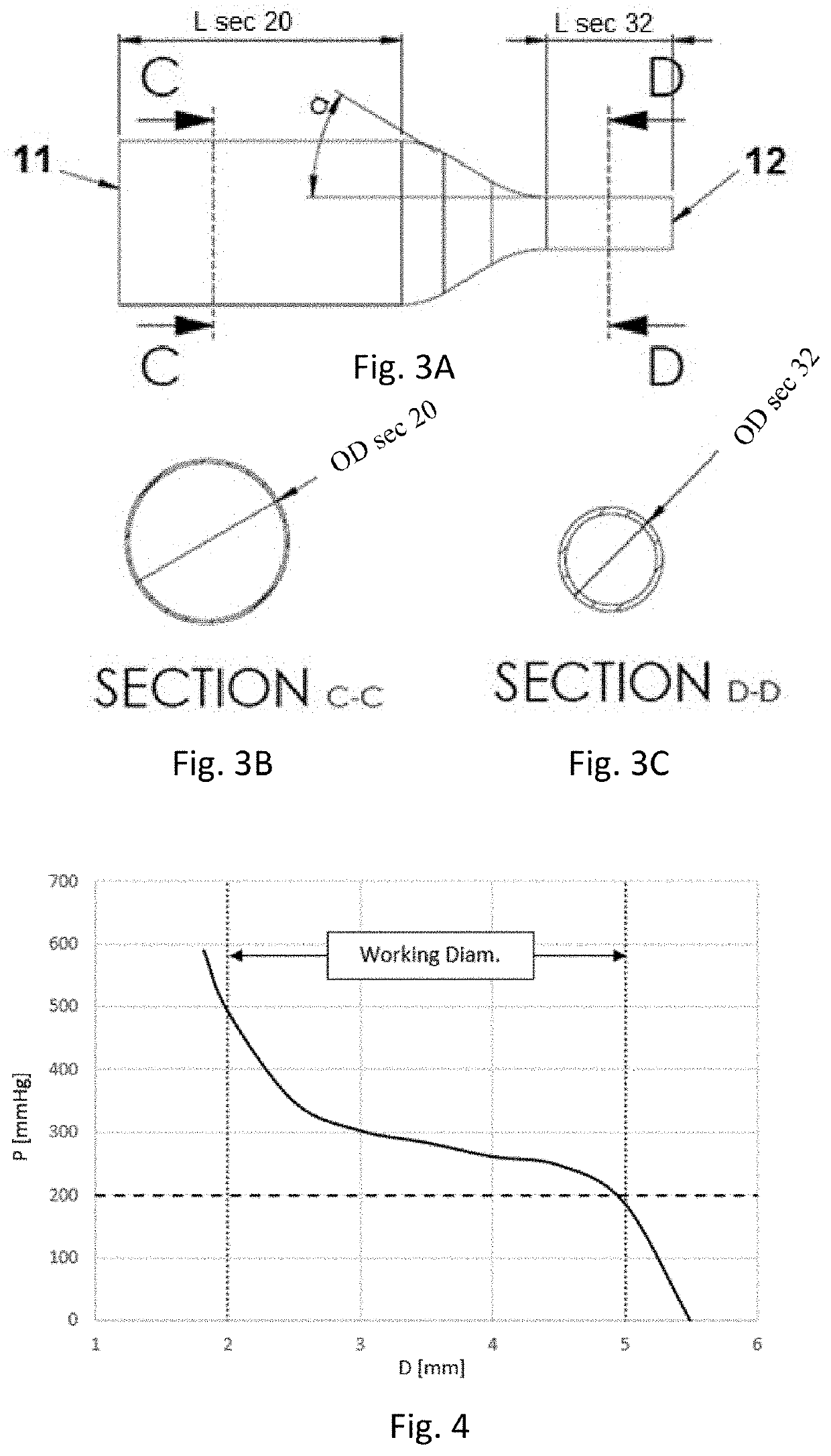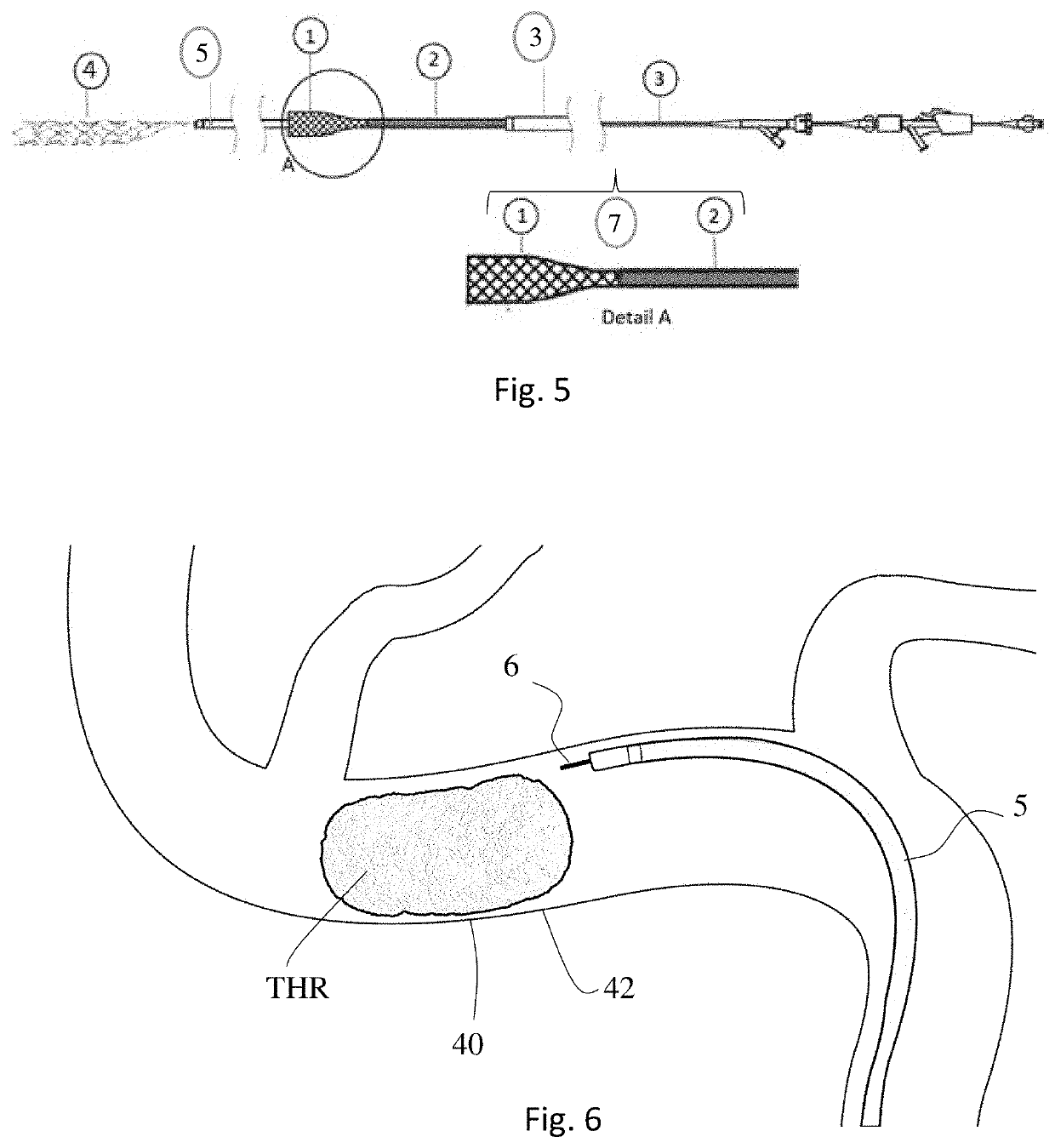Thrombectomy system and method of use
a thrombus and thrombosis technology, applied in the field of thrombosis apparatus, can solve the problems of not being able to navigate the delivery catheter, not being desirable, or even possible, to achieve the effect of improving the efficacy of removing vascular thrombi
- Summary
- Abstract
- Description
- Claims
- Application Information
AI Technical Summary
Benefits of technology
Problems solved by technology
Method used
Image
Examples
example 1
1. Study Objectives
[0136]This study aimed to assess the performance of ANCD 5.2*9 mm prototype 2018 (hereinafter referred as ANCD). ANCD 5.2*9 mm prototype 2018 is an expandable-tip aspiration catheter built using a DFT (Nitinol / platinum) braided structure covered with silicone as defined below. The performances were evaluated in an in vitro 3D simulation model, a cerebrovascular model of the intracranial circulation that simulates the carotid and cerebral physiological blood flow, pressure and vessel anatomy including an occlusive ex vivo clot analog.
TABLE 3ANCD 5.2*9 mm prototype 2018ShapeOD sec 20 [mm]5.2parametersOD sec 32 [mm]1.65L sec 20 [mm]9α sec 31 [°]31L sec 32 [mm]3.5BraidingWire OD [pm]51parametersWire number48β sec 20 [°]55β sec 32 [°]45
[0137]Specifically, this study aimed to assess the efficacy of ANCD in combination with stent retrievers in terms of the rate of rev ascularization and rate of clot embolization.
2. Materials and Methods
[0138]2.1 Samples
[0139]The ANCD dev...
example 2
[0204]1. Background. This study examines the safety and efficacy of the ANCD thrombectomy system described herein in connection with FIGS. 1-5 in combination with a stent retriever in vivo.
[0205]2. Methods. In patients presenting with apparent cerebral blood clots, a 6F guide catheter (NeuronMax®, Penumbra) was placed at the level of the internal carotid artery, in a triaxial setting, and a microcatheter (e.g., Phenom 21®, Medtronic) was advanced over a microguidewire to the clot. The ANCD catheter, in its retracted position, was then positioned as close as possible to the proximal aspect of the clot (terminal internal carotid artery or middle cerebral artery) and the funnel was deployed in order to locally restrict flow. Site of deployment (i.e., below vs above carotid siphon) was recorded. The microcatheter was then advanced through the clot, and a stent retriever (SR) (Solitaire® family, Medtronic) deployed as in usual practice. At this point, the microcatheter was completely wit...
example 3
1. Background
[0216]Example 1 addressed the superiority of the ANCD thrombectomy system described herein in connection with FIGS. 1-5 in combination with a stent retriever in terms of in vitro revascularization to a Balloon Guiding Catheter (BGC) or a Distal Access Catheter (DAC) in combination with stent retriever, especially with fibrin rich clots. Example 2 addressed the safety and efficacy of the ANCD thrombectomy system described herein in connection with FIGS. 1-5 in combination with a stent retriever in vivo. This Example 3 identifies the physical properties of the ANCD system and its use with a stent retriever that are responsible for the superior results discussed in Example 1-2.
2. Methods
[0217]2.1 Experimental method. To empirically examine the performance of the ANCD design, the ANCD has been tested against commercially available catheters (Table 11). All experiments were performed without a stent retriever (SR) and repeated including a SR (Solitaire2® 4×40 and 6×20 mm; Me...
PUM
 Login to View More
Login to View More Abstract
Description
Claims
Application Information
 Login to View More
Login to View More - R&D
- Intellectual Property
- Life Sciences
- Materials
- Tech Scout
- Unparalleled Data Quality
- Higher Quality Content
- 60% Fewer Hallucinations
Browse by: Latest US Patents, China's latest patents, Technical Efficacy Thesaurus, Application Domain, Technology Topic, Popular Technical Reports.
© 2025 PatSnap. All rights reserved.Legal|Privacy policy|Modern Slavery Act Transparency Statement|Sitemap|About US| Contact US: help@patsnap.com



